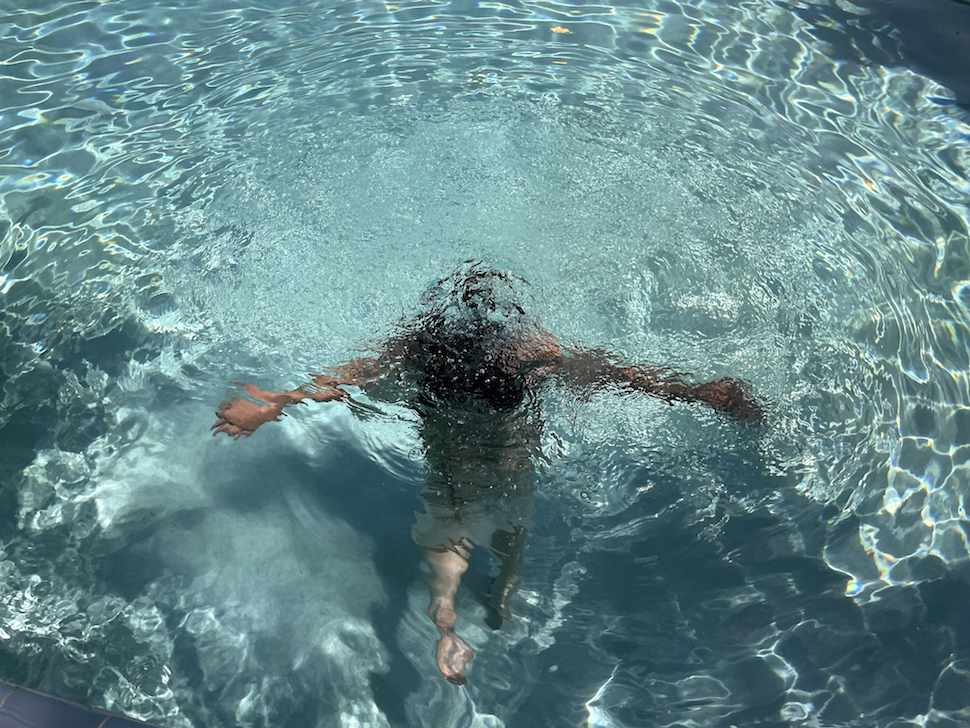
In May, I was happy to be invited to the Hot Springs Connection Conference at the Hot Springs Hotel and Conference Center in Arkansas. The Hot Springs Connection is the only group in the United States designed specifically for hot springs owners, operators, general managers, facilities directors, and industry professionals.
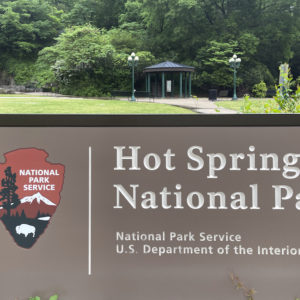 Wellness travel has been expanding, so it was time to see what new pilgrimages I might discover. The benefits from soaking in hot springs fits well with the shifts in consciousness among the public looking for ideas of mind, body, and spiritual health. My focus on hot springs photography was based on my book, Healing Waters (Aperture, 1998), and it blended into the theme of focused seminars for commercial geothermal pools, spas, and resorts, as well as guided group visits to the city’s historic “Bathhouse Row.”
Wellness travel has been expanding, so it was time to see what new pilgrimages I might discover. The benefits from soaking in hot springs fits well with the shifts in consciousness among the public looking for ideas of mind, body, and spiritual health. My focus on hot springs photography was based on my book, Healing Waters (Aperture, 1998), and it blended into the theme of focused seminars for commercial geothermal pools, spas, and resorts, as well as guided group visits to the city’s historic “Bathhouse Row.”
Water as a healing source was used from earliest times—Hippocrates around 460 BC to the Islamic Hamman—and at the same time it was popular in Europe. In 1832, Hot Springs became a national park, and the waters there had been used first by the Indians, then travelers, and soon it became a major American health resort. Many hot springs owners consider themselves water stewards who are devoted to sustainability, preservation, and implementing new ideas for relaxation, healing, and enjoyment for their guests.
The attendees’ presentations covered many innovative trends such as implementing power showers and waterfalls; creating programs for guests to heal long-term Covid; designing pools specifically for physical therapy on site for injury healing; designing products that package mineral bath salts from a combination of properties for joints, sports injuries, and skin issues.
During the pandemic, a number of hot springs went out of business, but now new owners are renovating historic sites and using more technology, like incorporating the latest laser methods to dig new hot spring wells.
Many hot springs owners consider themselves water stewards who are devoted to sustainability, preservation, and implementing new ideas . . .
Celebrating Hot Springs & Historic Bathhouses
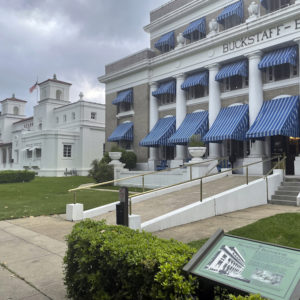 For me, I chose to stay at the Arlington Hotel and Spa where the traditional thermal bathhouse and a grand mountainside twin-cascading pool would be the right atmosphere to shoot my creative photography style during the conference. I was at the other end of the city, and to attend the conference, I walked by the “bathhouse row” where two other bathhouses are still functioning—Quapaw and the Buckstaff—and also photographed other historical buildings. These three historic bathhouses receive the precious mineral water from the 5000-acre Hot Springs National Park.
For me, I chose to stay at the Arlington Hotel and Spa where the traditional thermal bathhouse and a grand mountainside twin-cascading pool would be the right atmosphere to shoot my creative photography style during the conference. I was at the other end of the city, and to attend the conference, I walked by the “bathhouse row” where two other bathhouses are still functioning—Quapaw and the Buckstaff—and also photographed other historical buildings. These three historic bathhouses receive the precious mineral water from the 5000-acre Hot Springs National Park.
A century ago, “taking the cure” of hot or cold water was important to people because there was no modern medicine. Doctors in Hot Springs were known to recommend different bathhouses for illnesses just like they write prescriptions for bottled pills today. “Taking the Waters” in the “Valley of Vapors” for example was said to help people with rheumatism (today’s arthritis), stress, fitness, and exhaustion. These baths provided and still provide a great atmosphere for the detoxification process through hot mineral water, so guests are cleansing and vacationing today at the same time.
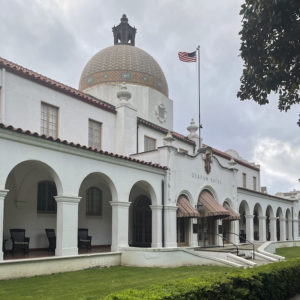 Historically, thermal water bathhouses were frequented by Franklin D. Roosevelt, Tony Bennett, Yoko Ono, and Barbara Streisand, to name but a few who took overnight accommodations at the Arlington Hotel in Hot Springs. All the bathhouses were utilized by the baseball legend, Babe Ruth. In fact, in the past, baseball players would spend spring training there to relax, recover, enjoy the region, and get in shape for the next season. People told me they feel “overall lightness, being refreshed in their body, peaceful with a clarity of mind, and better sleep quality.” The hot-spring circuit slows one down and enables guests to leave the world’s issues and their own stresses behind for a while.
Historically, thermal water bathhouses were frequented by Franklin D. Roosevelt, Tony Bennett, Yoko Ono, and Barbara Streisand, to name but a few who took overnight accommodations at the Arlington Hotel in Hot Springs. All the bathhouses were utilized by the baseball legend, Babe Ruth. In fact, in the past, baseball players would spend spring training there to relax, recover, enjoy the region, and get in shape for the next season. People told me they feel “overall lightness, being refreshed in their body, peaceful with a clarity of mind, and better sleep quality.” The hot-spring circuit slows one down and enables guests to leave the world’s issues and their own stresses behind for a while.
This city features many restaurants and nightclubs, such as The Ohio Club with an escape tunnel for gangsters. Beer that uses mineral water as an ingredient has become a popular product of Superior Baths on Bathhouse Row. Furthermore, the city has become a destination for the arts featuring a Hot Springs Music Festival, Hot Springs Documentary Film Festival, and a “Green Walk” displaying art, including longtime past resident JeanFo’s prominent sculpture in front of the convention center.
The conference participants were lectured and given a tour by the head ranger of the National Park to landmarks including the Fordyce Bathhouse Museum, Ozark Bathhouse Cultural Center, Lamar Bathhouse Row Emporium, Grand Promenade, and The Arlington Resort Hotel & Spa. A special tasting was provided by Superior Bathhouse Brewery with beers containing the local thermal spring water at the closing of the conference.
What to Expect with a Traditional Bathing Package
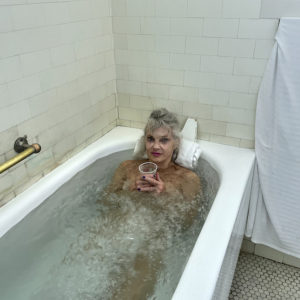
The author soaking, as snapped by a spa attendant.
Here are my 10 basic steps of a traditional bathing package: Step One: You make an appointment for the bath experience (from $30 to $45 at the Arlington Hotel and Spa ) and a massage afterward; try a bath special for $90. Step 2: Check in at the bathhouse desk where men and women are sent to separate areas. Step 3: You will be given a new loofah mitt, receipt, and a card with the name of your attendant. Step 4: You will be escorted to the locker room where you wrap a large sheet around you toga style, and lock up your things, and wear the key on your wrist. Next, you will be escorted to a private bathing area.
Step 5: Your attendant will have your hot bath almost full and will help you get in safely. There’s a large and powerful motorized whirlpool machine on the foot end to move the water around you. Step 6: Your attendant will make sure you are comfortable and give you a couple of cups of hot water to drink. They will check in on you at least every 10 to 15 minutes while you are soaking. They’ll help you out of the bath, and wrap yourself back up before leaving this tub room with your toga.
Step 7: Next is a sauna visit to continue the detox process. A glass of ice water is provided, and you will stay 5 to 10 minutes in the sauna. Step 8: The attendant will guide you to a hot-pack lounge which is in an open room with others. Here you will lay on your back while the attendant wraps each arm and leg in hot wet towels. Hot towels are placed on your belly and your whole body is covered with a hot dry sheet.Then a cool towel is wrapped around your face. This is the magical time to relax or nap and regenerate.
Step 9: Next, the attendant will come and unwrap you— except for your toga—and will take you to a cooling-off lounge with comfortable chairs that likely have other women and men around. If you leave you will go back to the dressing/ locker room and get your things from the grooming area equipped with hair dryers and personal-care products. It is customary to tip your attendants. The whole experience takes about one to two hours. Step 10: The massage is an added benefit. A different attendant will bring you to a cooling-off lounge until your massage therapist is ready for you. The room is darkened and you lay on the massage table nude with a sheet over you. Lotions and oils are used, and it is up to you to mention the degree of pressure you want. You will be told when it is over and escorted back to the locker area.
Linda Troeller
New York-based Linda Troeller is a renowned photographer who has been photographing spas since 1976. She is the author of numerous books, including Chelsea Hotel Atmosphere, An Artist's Memoir, Spa Journeys, Healing Waters, and the Erotic Lives of Women.
- Web |
- More Posts(1)